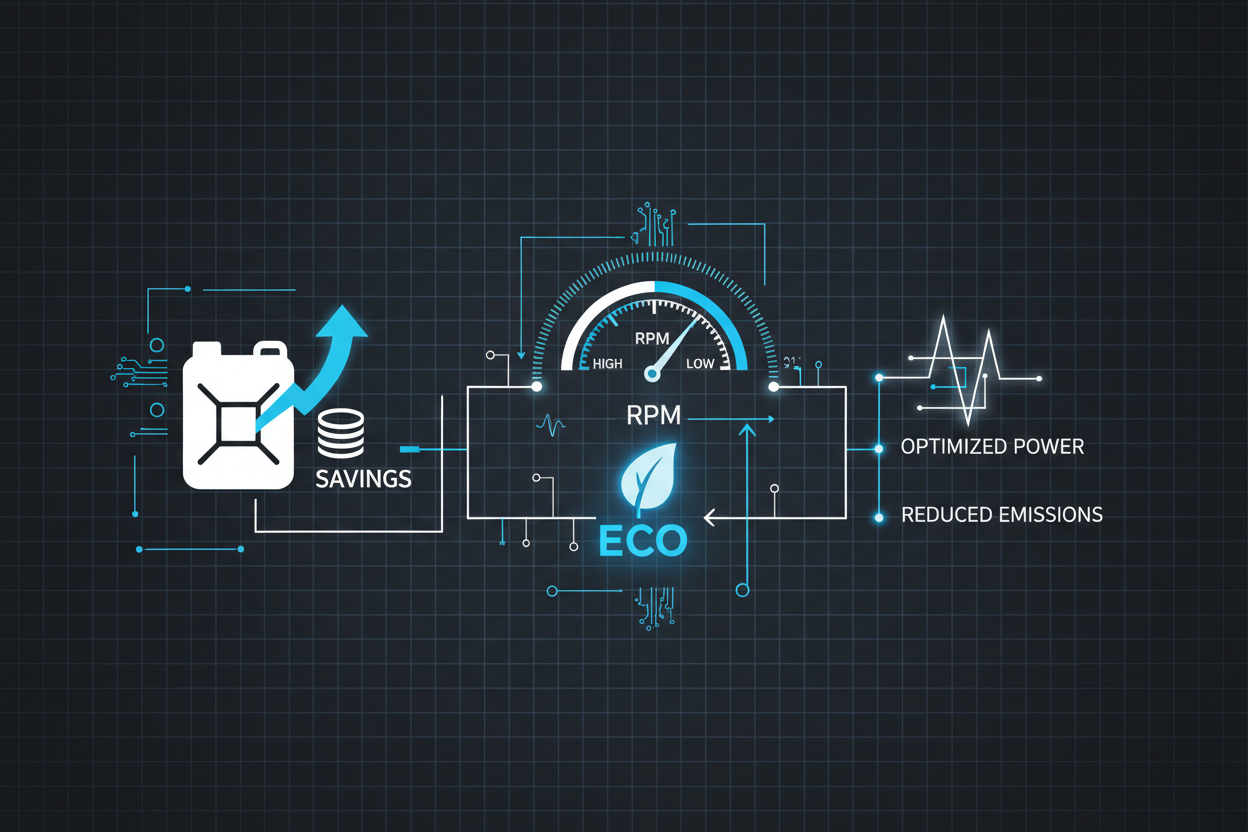How Inverter Generators Improve Fuel Efficiency
Efficiency influences generator cost, runtime, noise, and durability. Understanding efficiency helps users choose suitable inverter models for RV travel, camping, and home backup power.
Why Efficiency Matters in Portable Power
Fuel efficiency impacts operating expenses, runtime, emissions, and long-term engine reliability. Efficient systems save money during extended outages or multi-day RV trips.
- runtime
- operating cost
- carbon emissions
- engine durability
- noise levels
RV travelers and homeowners benefit most from reduced fuel consumption. More usage scenarios appear in our RV Generator Guide.
How Traditional Generators Consume Fuel
Conventional generators depend on fixed RPM operation. Their engines run near 3600 RPM to maintain 60Hz output regardless of load.
Light loads offer no fuel savings. Even phone chargers, small fans, or LED lighting require the same fuel burn as heavier appliances.
- using only a phone charger
- powering a single fan
- running basic LED lighting
Fixed-RPM systems waste fuel during low-demand periods. Backup users can compare alternatives in our Home Backup Generator Guide.

How Inverter Generators Increase Efficiency
Inverter generators avoid fixed-speed operation. Their microprocessors adjust engine speed based on real-time power demand across different load conditions.
This system uses multi-stage conversion for clean output. The engine only accelerates when power demand rises, supporting lower overall fuel use.
- raw AC generation
- AC-to-DC conversion
- digitally reconstructed AC output
Digital output control lets engines idle lower during light loads. Users can explore detailed fuel behavior in our inverter generator fuel consumption guide.
The Role of ECO Mode
ECO mode reduces fuel consumption by lowering engine speed during low-load operation. This function activates automatically when demand drops.
- fuel consumption
- vibration
- heat output
- noise levels
ECO mode extends runtime when powering lights, chargers, routers, or portable electronics. Camping users can explore related topics in the Camping Generator Guide.
Load-Based Fuel Consumption Example
A typical 4500W inverter generator shows major efficiency improvements. Reduced fuel usage appears at all load levels compared with traditional models.
- 25% load → very low fuel consumption
- 50% load → moderate consumption
- 100% load → maximum but still efficient
Frequency and voltage remain stable even when engine RPM changes. Users can see more runtime details in our inverter generator runtime guide.
When Efficiency Peaks
Inverter generators perform most efficiently when powering low-wattage devices. These items benefit from steady voltage and minimal engine noise.
- laptops
- mobile devices
- LED lighting
- small household appliances
- CPAP machines
- televisions
- routers
Electronics perform reliably on digitally controlled output. Users can compare waveform details in our waveform comparison guide.
Why Efficiency Decreases at High Load
Higher loads require faster engine speeds. Rising RPM increases fuel usage and may disable ECO mode during heavy operation.
- the engine must increase RPM
- fuel consumption rises
- ECO mode may turn off automatically
Even at full load, inverter generators remain quieter and more fuel-efficient than comparable conventional models.
Efficiency and Long-Term Savings
Higher efficiency reduces yearly fuel purchases, extends engine life, and improves generator reliability for long-term ownership.
- less fuel purchased
- fewer tank refills
- reduced engine wear
- better long-term reliability
Fuel savings can exceed the price difference between inverter and traditional generators. Users can explore generator economics inside our inverter generator cost guide and the full Inverter Generator Guide.
Conclusion
Inverter generators improve efficiency using smart speed control and digital power conversion. Their RPM flexibility delivers lower costs, longer runtime, and quieter performance across RV, camping, and home applications.
Explore more efficiency insights inside the complete Inverter Generator Guide.
